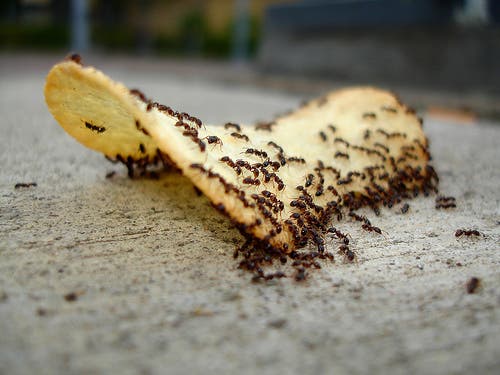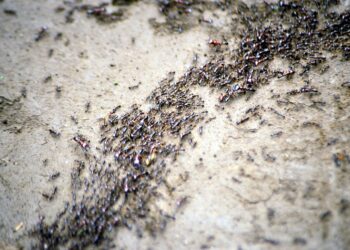If you ever dropped food on the pavement, don’t feel too bad. It’ll get scrapped bit by bit by the ever resourceful ants, so you’re actually doing a favor to these swarms of critters. But have you ever wondered why ants can eat ice cream, hot dogs or just about every kind of junk food we unwittingly throw at them? Some researchers looked at this question and found that some particular ant species have seemingly adapted to consume junk food.

“The ants that live alongside us in our cities also seem to be those very same species that can consume the similar meals that we do, and do so the most,” Clint Penick, a post-doctoral fellow at North Carolina State University.
Dr. Penick and his team collected 100 ant specimens from 21 species living in various urban settings in New York City, then analyzed their bodies for carbon isotopes. We use carbon isotopic data for exactly the same reason that we use oxygen isotopic data: to find out from where the atoms in a specific object (e.g., an animal or plant) are derived, and what their history has been. The history of carbon atoms in living organisms involves how the organisms obtained these carbon atoms. This is why it’s such a great tool for dating artifacts or fossils. In our case, the researchers studied the isotope concentrations to see how much junk food the ants where eating.
Foods that are heavily based on corn or sugar cane (fundamentally, all processed foods) and meats have a tendency to be enriched in carbon 13. The researchers found that those ants that live closer to humans had much more C13 in their bodies. Ants found in medians had higher levels of carbon-13 than those found in parks, for instance. Only one species, Lasius cf. emarginatus, didn’t particularly enjoy junk food, despite living close to humans. The species, however, is a newcomer to NYC. This suggests that ants have adapted to consume food meant for humans.
“Human foods clearly make up a significant portion of the diet in urban species,” Penick says. “These are the ants eating our garbage, and this may explain why pavement ants are able to achieve such large populations in cities.”
The findings were reported in Proceedings of the Royal Society B..






